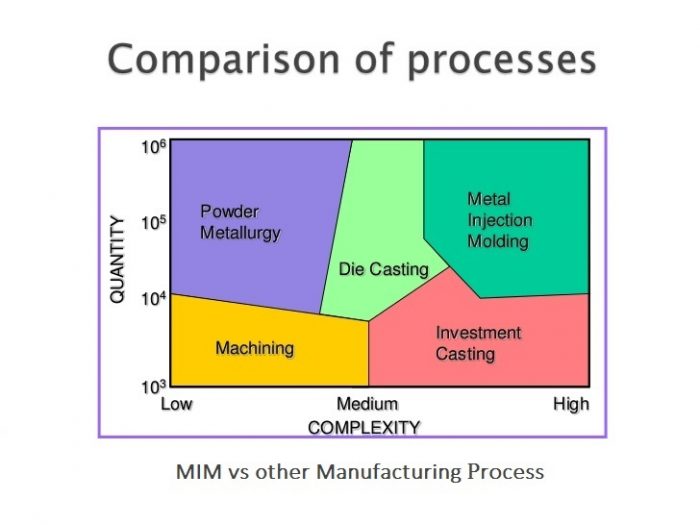Die Casting: Metal Injection Molding (MIM) can handle higher-temperature alloys than die casting, since the MIM alloys are never melted – the polymer binder allows the powder to make the desired shape in a die at temperatures similar to plastic injection molding. This also results in very long tool life, with cavity lifetimes of over 250,000 shots without needing substantial rework.
Stamping/ Fine Blanking/ Screw Machining: By using tooling similar to plastic injection molding tooling, complex 3-dimensional geometries impossible to produce by stamping, fine blanking or screw machining are easily produced in MIM.
Powder Metal: Small powder sizes (typically < 25 um) can be used in MIM, smaller than the powder used in traditional powder metallurgy. The small size leads to a relatively high amount of free surface area, which during sintering allows MIM components to sinter to near full density. Also, the MIM molding process allows for more complex designs.
CNC/EDM: The use of multi-cavity tooling can provide high production rates (100,000’s per month) and lowers component costs in MIM that are difficult to match by CNC machining or EDM.
Investment Casting: MIM does better than investment casting in filling out thinner sections, surface finish, and providing accurate details. The smaller the piece is, the more competitive MIM will be vs. a casting.

